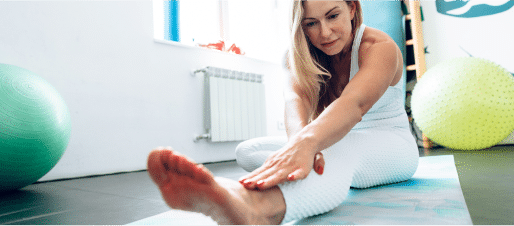Now that school is back in session and fall sports are underway, it’s important for parents to know how to prevent concussions, as well as the signs to look for and how to treat the symptoms. In this post, we’ll discuss how to prevent and treat sports-related concussions.
What is a concussion?
According to the Centers for Disease Control and Prevention, a concussion is a type of traumatic brain injury that’s caused by a bump, blow, or jolt to the body. This sudden movement causes the head and brain to move back and forth quickly, which can even cause the brain to bounce around or twist in the skull. When this happens, chemical changes occur in the brain and brain cells can even become stretched and damaged.
How do concussions happen?
The brain is made up of soft tissue that’s protected by cerebrospinal fluid inside of a hard skull. Since the brain floats around in that fluid, it can move quite easily and bang against the skull after impact.
Signs of a concussion
If your child was playing a sport and banged their head and starts exhibiting any of the following signs of concussion, it’s important to take them to the doctor immediately. It’s also important to remember that concussion symptoms don’t always show up immediately and can take up to three days to manifest. This is why it’s critically important to get to the doctor as soon as you notice any of the following:
- Headache
- Dizziness
- Feeling nauseous
- Throwing up
- Blurred vision
- Difficulty with balance and/or coordination
- Slurred speech
- Saying things that do not make sense
- Difficulty concentrating and thinking
- Difficulty making decisions
- Trouble remembering things
- Suddenly feeling very sleepy
- Difficulty falling asleep
- Feeling anxious and/or irritable for no reason
- Feeling sad or more emotional than normal
Preventing Concussions
The two sports where concussions are most commonly seen are football and soccer. Often, football players will get concussions from helmet-to-helmet contact, being tackled extremely hard, or dangerous falls. For soccer players, they are usually caused by heading the ball and head-to-head contact and collisions with other players.
To prevent concussions in football, one of the most high-impact sports that kids play, talk to your kids about the following safety strategies:
- Make sure all equipment fits and is used properly and is in good condition.
- Teach young kids proper heads-up tackling techniques
- Avoid unnecessary helmet-to-helmet contact.
- Enforce rules of safe play and sportsmanship at all times
- If a player does suffer a head injury, make sure they are removed from the game immediately and monitored properly. Never let a player return to the field after a head injury without proper medical clearance.
To prevent concussions in soccer, consider the following new guidelines by U.S. Soccer:
- No child under age 10 should head the ball during practice or games.
- Players aged 11 to 13 should only head the ball during practice.
- When heading, players should:
- Lead with the trunk of their bodies and pull from their core.
- Communicate clearly with their teammates and opponents to let them know they are going in for a header.
- Watch for the ball at all times.
- Only make contact with the ball using the “sweet spot” on their forehead.
Helmets Play a Key Role in Preventing Concussions
A helmet gives your child an extra layer of protection against a TBI. You should encourage helmet use during the following activities to prevent concussions:
- Playing contact sports like football and hockey.
- Skiing and snowboarding.
- Riding a bike, snowmobile, or ATV.
- Skateboarding.
- Rollerblading.
Ways to treat concussions
Consider the following treatment options to nurse your child back to health after a concussion:
Rest
The most important thing someone can do after a concussion is rest and allow their body and brain to recover. For the first two days following a concussion, your doctor will likely recommend relative rest, which includes limiting activities that require thinking and mental concentration, such as playing video games, watching TV, doing schoolwork, using a computer, and texting. It’s important to avoid these activities as they may cause symptoms to become worse.
It’s also important to avoid physical activities that aggravate symptoms, including sports and vigorous movements.
After the period of relative rest, your doctor will likely ease your child back into their daily routine with limited screen time and slowly getting back into their schoolwork, including shortened schooldays and workloads. Light exercise and physical activity can usually be tolerated after a few days. But it is important to avoid activities that have a high risk of exposure to head impact until the child is fully recovered.
Pain Relief
Avoid using medicines that contain glutathione and contact your doctor for other pain relief options. Some of the best natural remedies are Earlthely pain potion, breathing exercise, and of course ice while taking in extra magnesium with soaks, lotions or sprays. One recommendation for natural products like this can be found on Living the Good Life Naturally (use the code MaggieR for a discount).
How Neurofeedback is used to treat concussions
Another concussion treatment option is neurofeedback. After a concussion, brain chemicals can alter, which can cause negative changes in brain waves. This can lead to bigger problems with memory loss and brain fog. Neurofeedback helps doctors determine which brain waves have experienced changes.
Neurofeedback, which is also called electroencephalogram (EEG) biofeedback, uses the brain’s natural ability to change as a way to reshape weaknesses in its functioning and return the brain rhythm back to normal.
The EEG technology and neurofeedback can heavily impact the activity of neurons in the brain. Neurofeedback uses a 19-channel EEG that allows doctors to see whether there’s too much or too little activity happening in specific brain regions.
Over the course of 20 neurofeedback sessions, the brain is given 70,000 different learning opportunities. This repetition helps create changes in the brain’s behavior.
Summary
Concussions are unfortunately common in certain youth sports and can be quite scary for the parent and child. The good news is that with a little extra care and awareness, you can do your part to keep your child safe from a concussion. We hope this post has given you valuable insight into how to prevent and treat sports-related concussions.
All of us parents know that accidents happen. If your child still suffers a concussion, there are several treatment options available, including neurofeedback. If you’d like to learn more about neurofeedback and its impact on concussion recovery, please contact me today.




